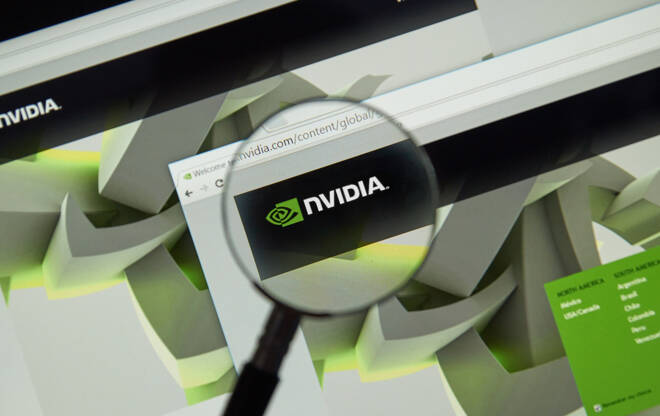Advertisement
Advertisement
Striking the Right Balance: Navigating the AI Stock Boom with Caution
By:
Economist warns of recession risks in AI stock surge, as imbalanced markets and fund managers navigate complexity for optimal balance.
Highlights
- AI stocks surge, reminiscent of dot-com boom.
- Imbalanced market with few mega-cap stocks driving performance.
- Fund managers face dilemma of owning AI stocks while managing risk.
Overview
Investors who have flocked to stocks with artificial intelligence (AI) exposure may find themselves paying a steep price. Economist David Rosenberg, known for his contrarian views, argues that the AI frenzy has diverted attention from recession risks. This surge in AI stocks bears striking similarities to the dot-com boom of the late 1990s, particularly evident in the Nasdaq 100 breakout over the past six months. While the excitement surrounding AI is undeniable, it is crucial to recognize the potential risks and underperformance associated with excessive exposure to this sector.
The AI Stock Surge
The recent blowout quarter of Nvidia, a leading chipmaker in the AI field, has fueled the excitement surrounding AI stocks. Nvidia’s strong quarterly earnings beat and the surge in demand for its AI chips have resulted in significant gains, with its stock surging more than 24% and experiencing a remarkable 133% increase over the last six months. Moreover, other AI competitors such as Alphabet, Microsoft, and Palantir have also witnessed a surge in their stock prices.
Imbalanced Market
However, despite the AI stocks’ impressive performance, broader market indicators raise concerns. Breadth measures for the S&P 500 are at their worst since 1999, with only a handful of mega-cap stocks accounting for 90% of this year’s price performance. The tech weighting in the S&P 500 has reached 27%, reminiscent of the dot-com bubble of 2000. This skewed market distribution, coupled with the historical behavior of banks, consumer discretionary stocks, and transports preceding previous recessions, suggests an ominous pattern.
Dilemma for Fund Managers
The rally in AI-related companies has placed fund managers in a challenging predicament. On one hand, owning a substantial portion of AI stocks is essential to avoid underperformance, given their increasing weight in stock indexes. On the other hand, excessive exposure to a single stock such as Nvidia increases risk and poses challenges for active managers striving to outperform benchmarks.
Implications of Index Weighting
The outsized weighting of Nvidia in indexes means that even minor fluctuations in its shares can significantly impact overall index performance. However, due to portfolio flexibility, concerns about overexposure, and fund regulations, many investors maintain smaller allocations to Nvidia than its relative weighting in indexes. This disparity between index weight and actual allocation limits the potential gains and introduces the risk of underperformance.
Striking the Right Balance
As a handful of mega-cap companies dominate the market, owning a sufficient number of shares in AI companies has become imperative. Fund managers aiming to outperform indexes like the S&P 500 must navigate the complexities of the market and find the optimal balance. While limiting exposure to AI shares may come with significant costs, excessive exposure introduces risks that must be carefully managed.
Conclusion
The massive rally in AI shares has presented fund managers with a dilemma. While owning an adequate amount of AI stocks is crucial to avoid underperformance, excessive exposure brings its own set of risks. Achieving the right balance between maximizing potential gains and mitigating risks is paramount. Fund managers must carefully navigate the complexities of the market and make informed decisions to achieve optimal results for their investors.
About the Author
James Hyerczykauthor
James is a Florida-based technical analyst, market researcher, educator and trader with 35+ years of experience. He is an expert in the area of patterns, price and time analysis as it applies to futures, Forex, and stocks.
Latest news and analysis
Advertisement
